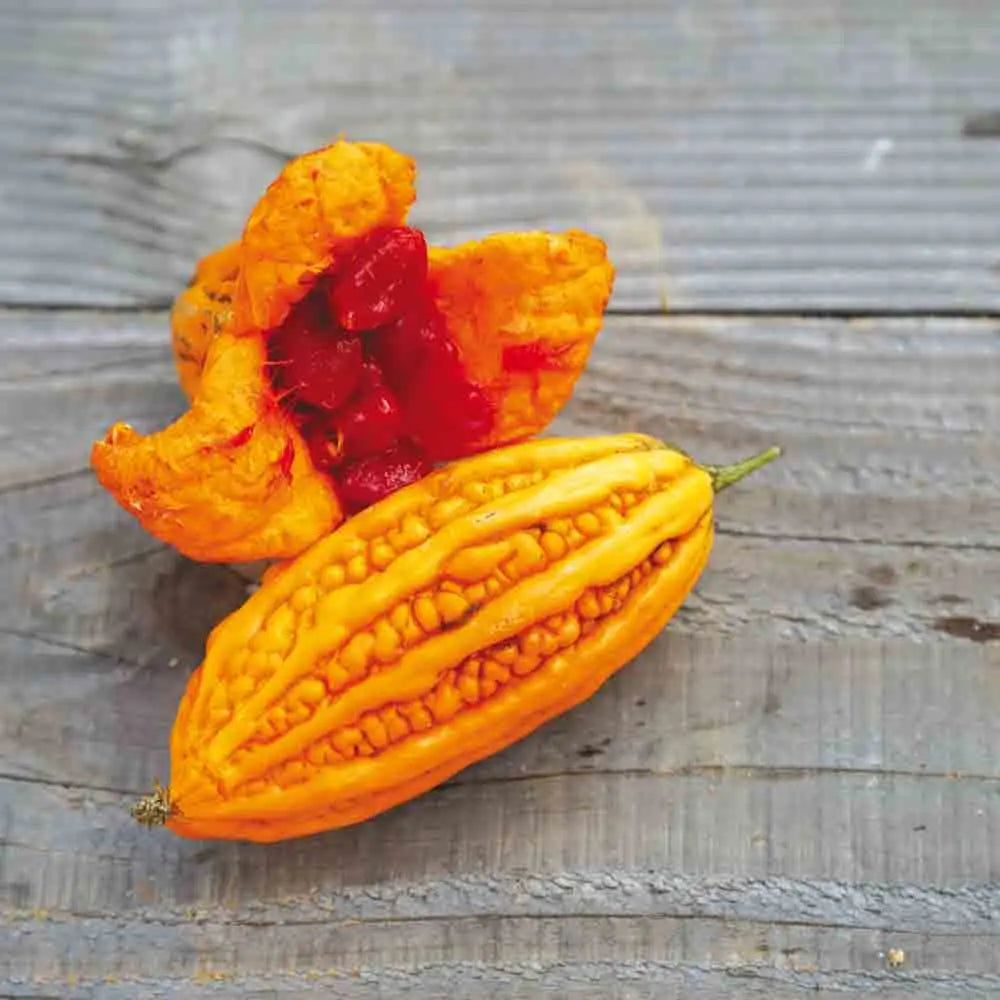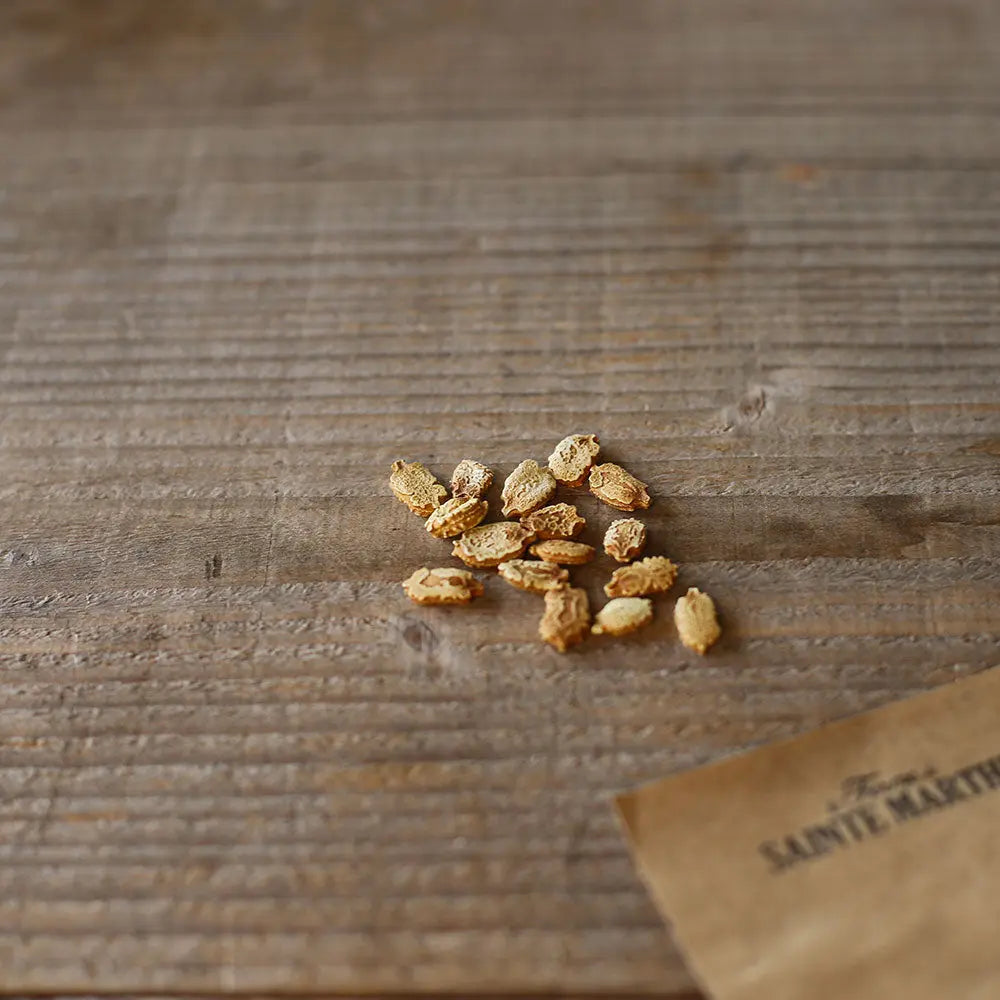MARGOSE A QUINTANT AB
Momordica charantia
Native to Asia and Africa , bitter gourd is a climbing plant that can grow up to 2 m, producing fruits resembling large gherkins. The green, peeled, seedless, and finely sliced fruits are eaten sautéed with garlic and onions, adding a glass of white wine at the end of cooking, and served with fish or pork. The people of Réunion prepare them raw in rougaille or achards. To remove the bitterness, they are often blanched and marinated. The red flesh around the seeds is also eaten as a treat when young.
Successful sowing of Margosa
Sow in March/April in a greenhouse, in a warm bed (constant 20-25°C) or in pots of moist, fine seed compost. Cover the seed one to two times its thickness and press down. Keep the compost moist but not soggy. Germination can take 1 to 4 weeks.
Planting of the Margosa prickly
Transplant when the plant has 3 leaves, 80 cm apart in all directions, around mid-May in a warm, sunny, sheltered location. Add compost when planting. Row or grow near a fence or trellis. Bitter gourd needs a lot of heat to ripen the fruit. Beware of slugs and snails, which love young seedlings.
Harvesting Margoses
Harvest in June or July when the fruit is fully formed. Keep a small piece of the stem for better fruit preservation.









